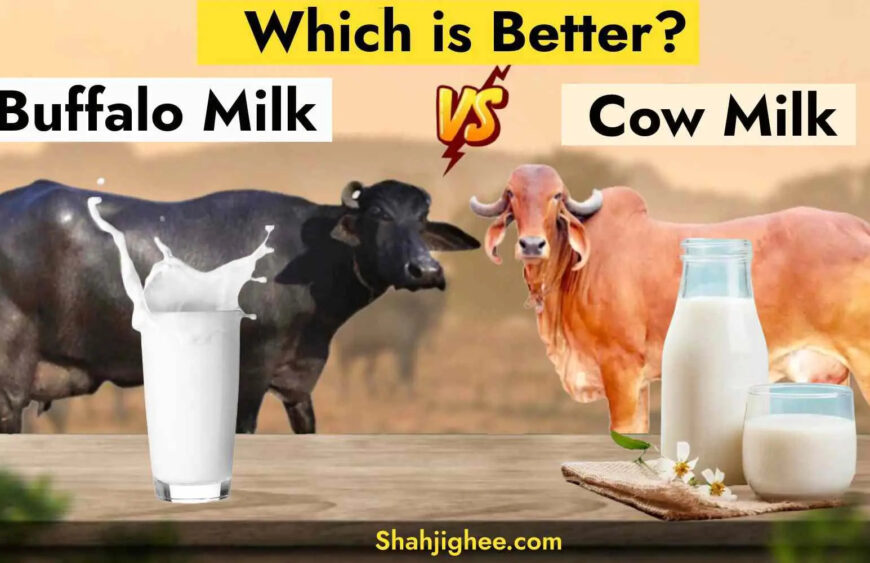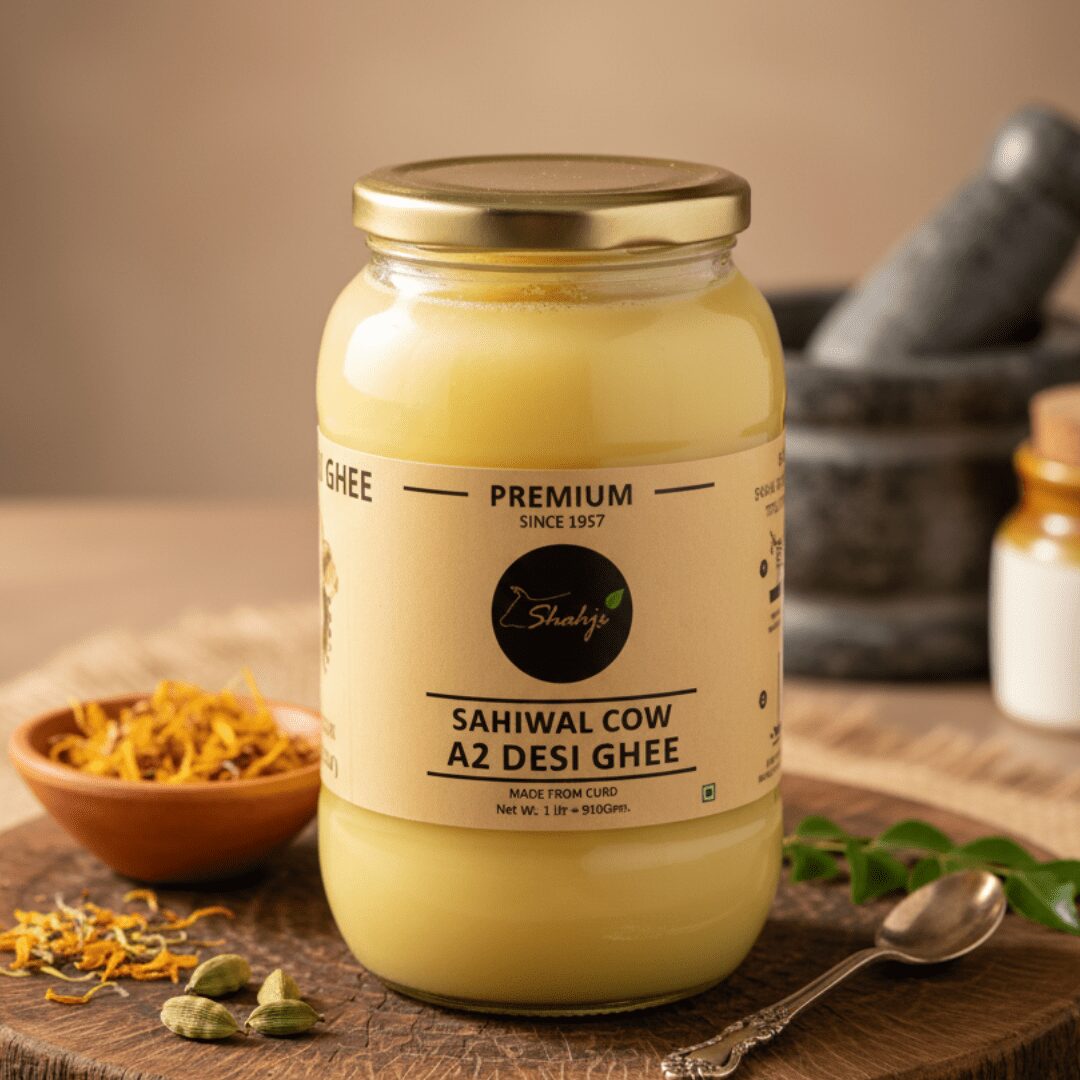Cow Milk Vs Buffalo Milk: What Is The Difference & Which Is Better?

Milk is at the top of the list of food and beverage products in terms of versatility. Milk is the primary ingredient in preparing these delectable and nutritious products, such as yogurt, cheese, and clarified butter.
Furthermore, milk is an essential food for the growth and well-being of infants, children, and adults because it contains naturally occurring calcium, vitamins, and protein.
As people become more aware of their options, one key question that has arisen is what the difference between cow milk and buffalo milk is. After all, they are both variations of the same substance, but are there any differences in the health benefits they provide? We investigated this matter! What we discovered was that cow milk and buffalo milk both have unique benefits and flavonoids.
Difference Between Cow Milk and Buffalo Milk
1. Difference in Texture And Nutritional Content
Cow milk has a lower fat content and a lighter texture, whereas buffalo milk is creamier and thicker. As a result, cow milk is easier to digest. In terms of protein content, buffalo milk has more than cow milk, but cow milk has more water than buffalo milk. Buffalo milk also has a higher calcium, phosphorus, magnesium, and potassium content, whereas cow milk has a higher vitamin content.
Cow milk is yellowish-white in color, whereas buffalo milk is creamy white because the beta-carotene pigment is converted to colorless vitamin A, making buffalo milk slightly less yellow than cow milk.
2. Difference in Usage and Preservation
Because of its thicker texture, buffalo milk is known for producing better cottage cheese and desserts than cow\’s milk, which is lighter and watery. In terms of preservation, buffalo milk can be stored for longer periods of time due to its high peroxidase activity, whereas cow milk must be consumed within 1-2 days.
3. Difference in Health Benefits
Buffalo milk contains beta-lactoglobulin and potassium, both of which have been shown to reduce blood pressure. Buffalo milk has lower cholesterol levels than cow milk, making it a better choice for people suffering from PCOD, hypertension, kidney problems, and obesity.
When compared to cow\’s milk, buffalo milk has a higher nutritional value in terms of protein, vitamins, and minerals, as well as antioxidant protection, which improves bone and heart health. However, when compared to cow\’s milk, it has a higher fat, lactose, and calorie content.
4. Difference in Intolerance
Many people who are lactose intolerant or have an intolerance or mild allergy to cow\’s milk find that drinking buffalo milk helps and alleviates any problems caused by their dietary allergies, such as eczema or psoriasis. The evidence, however, is anecdotal rather than based on rigorous scientific research.
5. Difference in Milk Nutritional Value
Nutritional information of cow and buffalo milk
Nutrition |
Buffalo milk |
Cow milk |
|
Water |
81.1% |
87.8% |
|
Protein |
4.5g |
3.2g |
|
Fat |
8g |
3.9g |
|
Carbohydrate |
4.9g |
4.8g |
|
Energy |
110 kcal |
66 kcal |
|
Sugar lactose |
4.9g |
4.9g |
|
Saturated fat |
4.2g |
2.4g |
|
Monosaturated fat |
1.7g |
1.1g |
|
Polyunsaturated fat |
0.2g |
0.1g |
|
Cholesterol |
8mg |
14mgg |
|
Calcium |
195 micro g |
120 micro g |
As the above chart shows, buffalo milk has less water content and is thus thicker than cow milk. It also has more protein, more calcium, and less cholesterol than cow\’s milk. However, its high fat and calorie content make it less appealing. So, if you drink buffalo milk, you should definitely exercise. This is most likely why people who worked hard on the farm preferred buffalo milk over cow milk.
6. Difference in Cow Milk and Buffalo Milk Mineral Content
|
Minerals |
Cow milk |
Buffalo milk |
|
Calcium |
0.12% |
0.18% |
|
Phosphorus |
0.10% |
0.14% |
|
Magnesium |
0.01% |
0.02% |
|
Sodium |
0.05% |
0.04% |
|
Potassium |
0.15% |
0.11% |
|
Chloride |
0.10% |
0.07% |
|
Citrate |
0.18% |
0.18% |
Except for more calcium and phosphorus in buffalo milk and more potassium in cow milk, there is no significant difference in mineral content.
31+ Amazing Difference Between Cow And Buffalo Milk

*Also Read*
Difference Between Cow Ghee And Buffalo Ghee
Criteria |
Cow Ghee |
Buffalo Ghee |
|
Color |
Yellowish |
White |
|
Composition |
Fat, cholesterol, free fatty acids, and carotene |
Similar to Cow Ghee but has no Carotene |
|
Nutrients |
Vitamins, Minerals, Proteins, Antioxidants, Calcium |
Calcium, Phosphorus, Magnesium |
|
Milk to ghee ratio |
Less ghee compared to buffalo milk |
More ghee for the same quantity of milk |
|
Shelf life |
Lower shelf life |
Higher shelf life |
|
Weight management |
Helps in weight loss |
Helps in weight gain |
|
Digestion |
Much more digestible |
Is heavier on the gut |
|
Skin benefits |
Good for skin issues |
Excellent winter moisturizer. |
|
Cooking |
It has a somewhat neutral flavor. |
Is more fragrant and flavorful |
|
Dairy products |
are used for foods that are easily digestible. |
used to make creamy, fat-rich dairy products. |
|
Consumption by elders |
It is preferred due to its numerous advantages. |
Older people should avoid it |
|
Ayurveda |
has more medicinal properties and is used in Ayurvedic medicine. |
Not much used in Ayurveda |
Read More About: Cow Ghee Vs Buffalo Ghee
The Final Word
The nutritional value of buffalo and cow milk is nearly identical. Buffalo milk is beneficial to bone health, dental health, cardiovascular health, and weight gain. Cow\’s milk is beneficial for bone health, dental health, obesity reduction in children, thyroid protection, and heart protection. So the decision is yours.
A2 Gir Cow Ghee
1 LTR
Best Price: ₹2125 with Coupons

A2 Sahiwal Cow Ghee
1 LTR
Best Price: ₹1619 with Coupons

Murrah Buffalo Ghee
1 Ltr
Best Price: ₹1235 with Coupons
















